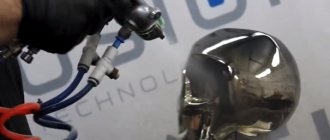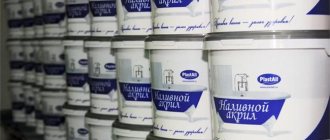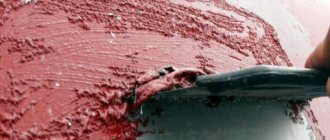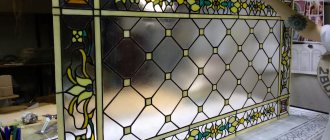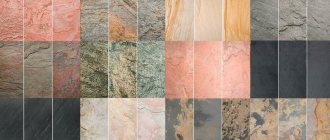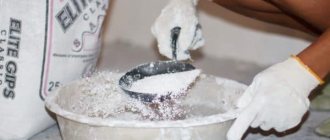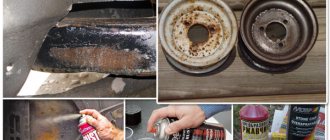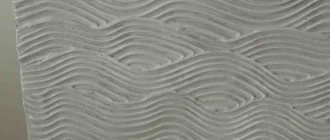History of glass painting
Stained glass painting begins its history in the 10th century, when sheet glass appeared. Colored mosaics did not convey fine details, so the appearance of this technique was a big event. In the Middle Ages, stained glass painting was used only in cathedrals. The sun's rays, passing through the colored glass, created magical highlights and mysterious penumbra. During the Renaissance, images became more voluminous and complex in composition. Unfortunately, during the religious wars, many stained glass windows were broken; ordering new ones was too expensive, so they were replaced with ordinary glass for a long time.
In the 18th and 19th centuries, stained glass painting experienced a new rise. At this time, glass was produced in large, even sheets, so a huge scope opened up for artists. Moreover, they now had a wide palette of oil and silicate paints at their disposal. The windows began to look like paintings with fascinating biblical and secular scenes. In the 1840s The Imperial Glass Factory even opened in Russia, producing stained glass.
Stained glass
At the end of the 19th and beginning of the 20th century, glass compositions lost their popularity because they did not fit into the Art Nouveau style that was fashionable at that time. Moreover, the time had come for wars and revolutions, and fragile works were no longer relevant.
A new wave of interest in stained glass painting arose in the second half of the 20th century, when the need arose to restore destroyed ancient buildings and churches. New technologies have come to the aid of artists. Glass has become safe, and paints have become brighter, resistant to fading, temperature changes, and precipitation. It is not surprising that stained glass painting has again gained popularity not only among professional artists, but also simply among creative people who love to draw.
Briefly about stained glass paint
The concept of stained glass paints and what they are is not familiar to everyone. This is a type of paint and varnish material that is used to paint a smooth surface. Using glass paint you can decorate dishes, mirrors, ceramics or glass at home. You can buy such products at office supply and specialty stores.
If the master knows how to paint glass with stained glass paints, then he can decorate the following interior items with them:
- window frames, openings;
- ceilings, interior partitions;
- wardrobes - compartments, mirrors, clocks.
The use of this material by artists allows them to create landscapes, still lifes, various subjects and ornaments. In addition, glass painting can be used to transform dishes, glasses, vases and aquariums.
Glass enamel is characterized by resistance to ultraviolet radiation, temperature changes, and precipitation. Indelible stained glass material does not fade in the sun.
Materials and tools for stained glass painting
Materials for painting
Before you start creating, check that you have prepared all the tools and materials. You will need:
- The basis for painting is special glass, any glass object or surface (mirror, window, door, etc.). There should be no chips, deposits, or rainbow spots on the glass.
- Paints. For beginners, it is best to take paints that do not require firing, or fix the image with varnish.
- Contours. It is advisable that they be of the same brand as the stained glass paints.
- Brushes. Experienced artists advise using thin ones for contours and small details, thick ones for filling large fragments. It is better to take artificial pile. If your paints have special attachments, then you can do without brushes at all.
- Palette knife for blending paint.
- Transparent acrylic varnish.
- Stencil and marker for transferring the design.
- Water, alcohol or other solvent, depending on the paint base.
- Alcohol for degreasing the surface.
You will also need a palette, cotton swabs and toothpicks to correct details of the image, and a rag for wiping brushes and attachments.
Work in a well-ventilated area where no one disturbs you and there is no bright lighting. Cover the table and floor with covering material.
Where can I get a sketch for stained glass painting? A stencil is a sheet of plastic or cardboard on which slits are made corresponding to the painted parts of the image. If the design is complex, then it is attached to the back of the glass and traced along the lines with a thin marker.
Main types of paints
To paint on a glass surface or ceramics, use the following paint materials:
- Enamel. After application it forms a glossy surface. This durable paint does not contain lead and is therefore suitable for use on utensils used in the kitchen.
- Water based paint. It allows you to easily adjust the transparency. After application, the products are baked in an oven with a gradual increase in temperature and dried in the fresh air.
- Professional paint-glaze. It hardens at high temperatures, after which the product acquires a glossy surface.
- Regular glass paint. Can be used for painting both ceramics and porcelain.
- Vitrail Colors glass paints. Many professionals use them.
If you paint finished dishes without a design on it, the cost will be more profitable than purchasing it with a ready-made design. Therefore, it is better to draw on glass and ceramic products yourself. Acrylic painting works great on ceramic surfaces.
The contour for glass and ceramic products is a tube of acrylic paint and a sharp tip. Acrylic relief compositions - contour are used to apply the outline of a picture, strokes and inscriptions.
Stained glass painting techniques
Before you begin, you should decide on the technique in which you are going to paint the glass.
- The contour technique allows you to immediately visualize the result of the work. First you need to outline all the lines of the sketch. After it has completely dried, they begin to paint over the internal fragments. The finished drawing, thanks to its deliberate sketchiness, is very reminiscent of a real stained glass window.
- The non-contour technique is more complex. She suggests that paints flow freely across the glass, mixing with each other and creating bizarre abstractions. This requires special skill, deep knowledge of the properties of different paints depending on the brand, base, degree of dilution, and color compatibility.
- The multi-layer technique involves applying paint in several layers, and the quality of color mixing depends on how wet the lower strokes were. This allows you to achieve very realistic three-dimensional images and convey a subtle play of light and shadow. Water-based paints are best suited for this technique.
- Dot painting is filling the contours and the fragments themselves with many dots. The same sketch can be used to create different designs, you just need to change the density of application and the size of the dots.
Stained glass painting techniques can be combined. For example, inside the contour of one of the fragments you can use a non-contour technique and, after drying, add dots.
What paints are suitable for working with glass?
The most crucial moment is the choice of paint for glass. It must have a certain consistency and good adhesion to a smooth surface like glass. It is important that it does not wash off if the stained glass window is to last a long time. In addition, you should decide in advance what the pattern will be - matte or transparent. In the first case, it is better to use acrylic paints; for the second, polyurethane paints are suitable. Let's take a closer look at what colors you can use to paint stained glass glass.
Acrylic paints for glass surfaces
The water-based acrylic paint has a high rate of adhesion to the glass surface, which makes it possible to successfully use it to create stained glass windows. When it hardens, it forms a dense matte film. In order to apply acrylic paint to a glass surface, use a wide brush for painting a small area of the picture and an aerosol for large-scale works.
Silicate based paints
When producing silicate paint, liquid glass is included in its composition. For a long time, the color range of such dyes was not varied and was represented by different shades of white and black. Today, manufacturers offer silicate paints in a variety of colors. They do not fade in the sun and retain their color saturation for a long time. At the same time, high temperature (700–800°C) is required to fix it on glass.
Special stained glass paints
In stores you can find special stained glass paints that are resistant to abrasion, ultraviolet radiation and moisture. They come in gel, fired and unfired. To imitate the boundaries of glass fragments and the patterns themselves, special contours are used (thick composition in a tube). Professionals recommend dyes from companies such as the French Pebeo or the German Marabu.
Fast drying polyurethane dyes
Polyurethane paints are characterized by fast drying and transparency. When applied to glass, they form a film that is resistant to moisture and abrasion. By purchasing transparent paint, you can take the colors and independently obtain the shades you need for stained glass painting. It is recommended to introduce an adhesion promoter (improver) into the polyurethane composition for better adhesion to the surface.
Ink, felt-tip pens, markers
To make stained glass, you can use ink with a high adhesion rate. She makes drawings with clear lines. They are drawn with rapidographs, which are sold in sets consisting of pens with holes of different thicknesses. If you plan to temporarily decorate the interior with stained glass (for example, for the New Year), you can use special felt-tip pens to obtain the image. There are also special markers on sale, which are also selected according to the thickness of the rod.
Glass painting step by step
The contour technique is the simplest for beginners, which is why the master class is dedicated to it. Now that everything is ready, you can start creating your first masterpiece.
Stages of work
- The working surface must be degreased with alcohol so that the paint adheres better and lasts longer.
- Place the stencil on the glass (you can secure it with pieces of paper tape) and carefully trace the outlines with a marker. Now carefully remove the stencil so as not to smear the lines. Do not hurry. Also, a sheet with an image can be placed behind glass.
- Draw contours along the lines, moving from the center to the edges. Try to keep the line continuous and as even in thickness as possible. At first, the contours may be uneven - this is normal. With experience you will get better and better.
- Now the circuit should dry thoroughly, the drying time is indicated on the packaging. If you rush, the lines will blur and the drawing will be ruined.
- Then fill each fragment with paint. Move from the middle to the edges. Mix colors only on the palette.
- Start working on the background after you have worked out all the details of the image.
Now the finished painting needs to be dried, protecting the surface from dust. Drying time, as we indicated above, depends on the paint base. If the paint is water-based, then to fix the design you need to burn the product in the oven or cover it with colorless acrylic varnish.
How to make stained glass on glass at home?
So, the pattern has been chosen, the glass is prepared for work, paints and stencils are available, the most important stage begins - the manufacture of stained glass. Now you need to properly build the process at home. Step-by-step instructions:
- Remove the glass from the frame (if there is one). Wash and clean. Dry.
- Degrease the surface.
- Apply the design manually or using a prepared stencil, placing the stencil on the glass and carefully aligning the edges of the pattern. Mark the outlines of the drawing with a disappearing marker. If you have drawing skills, you can immediately use contour paste. By the way, using a circuit you can create an imitation of soldering a stack.
- Allow the outline to dry so that it does not smudge during the painting process.
- Now you need to paint the marked pattern. Use a brush to fill the inner space of the outline with the selected paint. Distribute the paint from the center to the edges. If you use an aerosol, you need to make sure that when spraying the paint lays down in an even layer.
- When creating smooth color transitions, base colors are first applied, then light or dark shades are indicated.
- Bubbles, if they form, can be removed with a toothpick. Errors are carefully removed with a cotton swab.
- Leave the stained glass to dry. If the instructions for the paint require you to coat it with nitro varnish, this is done before drying.
- Install the finished stained glass window into the frame.
Useful tips
Example of painting
- If the object you are painting comes into contact with food or drink, then make sure that the drawing is strictly on its outer side, and that the edges in contact with the lips are free from the paint layer.
- When firing water-based paints, you need to follow an important rule: the work is placed in a still cold oven and taken out of it only after it has completely cooled. The firing time is approximately 1 – 1.5 hours, the temperature is about 160 degrees. The manufacturer's exact recommendations are usually located on the paint bottle.
- Make sure that all contour lines are completely closed.
- You need to remove any imperfections - bubbles, excess paint, etc. - before it dries. Remove excess paint with a cotton swab or adjust it closer to the contours. It is convenient to pierce the bubbles with a toothpick. If the contour is smudged, it’s okay, just wipe it off the glass and try again.
- If the paints have thickened, then they should be diluted with thinners of the same brand.
New Year's window decorations
Frosty patterns on glass are more short-lived - but they are only needed until Christmas. There are several ways to apply them: toothpaste dissolved in water and sprayed onto the glass from a spray bottle; beer with magnesia in the ratio of half a glass per 50 g; fixer for photographs... However, such patterns on glass, created with your own hands, last only until the next window cleaning, and if you painted a picture for a long time to admire, you will have to additionally fix it. When “long-term” frost stained glass windows are required, craftsmen advise using wood glue. To make such paintings look even more authentic, the surface of the glass must be made matte - with sand, beer or matting paint.
Ready-made kits for beginners
If you don’t know where to start with your first steps in stained glass painting, in the catalog you will find excellent sets with stained glass coloring books. With their help, you will not only “taste” stained glass, but also create a beautiful and stylish piece of furniture. Choose your stained glass and design.
Ready set for painting
The set contains everything you need:
- base with a finished outline;
- stained glass paints;
- palette knife for shading;
- color scheme;
- rhinestones for decoration.
Some sets also include a clock mechanism with a pendant and hands.
Examples of finished works
No inspiration? Don't know what to draw? Take a look at these stained glass paintings and start painting!
Everything for glass painting in our catalog
